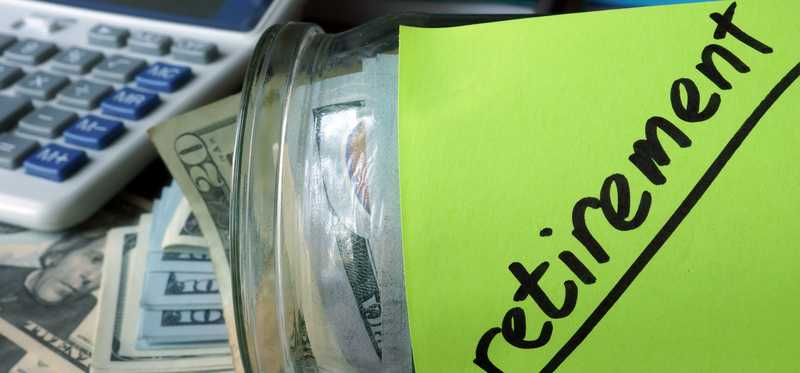15 Disastrous Retirement Planning Mistakes You Might Be Making

15 Disastrous Retirement Planning Mistakes You Might Be Making
Investors have faced a tough market in 2022
No matter how near or far away your retirement is, you may have found yourself thinking about it more lately given the current turbulent market. While your investment portfolio should be a significant part of your overall strategy for retirement, it's not the only factor to consider.
Let's take a look at 15 disastrous but all too common retirement planning mistakes you might be making and should avoid at all costs.
5 Stocks Under $49
Presented by Motley Fool Stock Advisor
We hear it over and over from investors, "I wish I had bought Amazon or Netflix when they were first recommended by The Motley Fool. I'd be sitting on a gold mine!" It's true, but we think these 5 other stocks are screaming buys. And you can buy them now for less than $49 a share! Click here to learn how you can grab a copy of "5 Growth Stocks Under $49" for FREE for a limited time only.
Previous
Next

1. Thinking it's too early -- or even too late -- to enact a solid strategy
Don't have a strategy in place for your retirement? Well, now is the time to fix that.
Whether your retirement is many decades in the future or much closer than that, it's never too soon or too late to plan for a more financially healthy way of life for your senior years.
ALSO READ: Retirement Planning: How to Map Out Your Financial Success
Previous
Next

2. Planning to live on Social Security alone
It's not uncommon for people to plan to live on their Social Security income after retirement, and this can certainly be an extremely important stream of income that you will rely on in the future.
However, it should not be the only source of income for your retirement. In fact, these benefits were never designed to fully support the cost of retirement, as they only take into account a portion of your pre-retirement income.
Previous
Next

3. Setting the bar for your financial retirement goals too low
The exact amount you target to have socked away by the time you retire will be very personal to you. And it will depend on many different elements, including your spending habits, your saving habits, where you plan to retire, and how soon you plan to retire, to name just a few.
The average rule of thumb is to try to save anywhere from 15% to 20% of your earnings every year to put toward your retirement nest egg. Of course, this percentage may need to be adjusted depending on how soon or how late you begin putting money away for retirement, as well as how you choose to invest it, whether that be in an employer-sponsored retirement plan, an individual stock portfolio, a Roth IRA, or any or all of the above.
Whatever your personal financial retirement goal is, consider raising it by at least 5% to 10%. Not only can this help you better keep up with the pace of inflation as the years go by, but it can also help you plan for unexpected life events that might arise as you get older, such as unexpected healthcare costs.
ALSO READ: 3 Ways to Grow $100,000 Into $1 Million for Retirement Savings
Previous
Next

4. Failing to set up and regularly contribute to your emergency fund
No matter how old you are or what your personal financial situation is, an emergency fund should always be a key aspect of your overall financial plan. And as you plan for retirement, you should continue to fund and expand your emergency stash with time.
Neglecting to do so could not only put you in a financial bind if a health event or other emergency arises, but could also force you to dip into other elements of your retirement portfolio to access liquidity in a hurry.
Previous
Next

5. Forgetting to diversify your streams of retirement income
Diversification is a wise strategy in many areas of your financial life, and planning for your retirement is no exception. From income stemming from sources like Social Security and pensions to brokerage accounts, 401(k) funds, high-yielding savings accounts, certificates of deposit, and real estate, the more sources of income you have, the better.
If one runs dry quicker than you anticipated or doesn't perform as you had hoped, you will have other streams of income to fall back on.
5 Stocks Under $49
Presented by Motley Fool Stock Advisor
We hear it over and over from investors, "I wish I had bought Amazon or Netflix when they were first recommended by The Motley Fool. I'd be sitting on a gold mine!" It's true, but we think these 5 other stocks are screaming buys. And you can buy them now for less than $49 a share! Click here to learn how you can grab a copy of "5 Growth Stocks Under $49" for FREE for a limited time only.
Previous
Next

6. Skipping out on investing regularly
Investing should be a key part of your retirement strategy, and the earlier you start, the better. The stock market is a fantastic place to build and sustain wealth, but it takes patience, time, and consistency to achieve the results you desire.
Even if you're closer to retirement and are just starting to invest in the stock market, that doesn't mean you have to miss out -- but the types of investments you choose and the way you invest your capital will likely look different and require a more laser-focused approach than if retirement were further around the bend.
By investing in a mixture of companies that span different industries, you can amplify and balance your potential returns while helping to build a more robust nest egg for retirement.
ALSO READ: If You Can't Answer These 4 Questions, You're Not Ready for Social Security
Previous
Next

7. Forgoing dividend-paying investments
Dividend stocks are the friend of any investor. Not only can dividend stocks increase the overall returns your portfolio realizes with time, but those consistent payments -- which usually occur on a quarterly basis-- provide additional funds you can reinvest regularly.
When you're planning your retirement strategy, don't discount dividend stocks as a viable source of income that you can use to help sustain yourself financially in the future.
Previous
Next

8. Investing based on current market dynamics rather than a defined long-term financial plan
Your approach to investing in the stock market for retirement can and should depend on several different components. For example, your timeline to retirement, your short-term (several years away) and long-term (five or more years away) goals for your life and finances apart from retirement, and how conservative or aggressive an investor you tend to be are all important to consider.
You should also contemplate how much capital you plan to invest regularly and your overall goals for your nest egg in determining the types of stocks you buy and how much you invest in each.
Considering these elements is all part of building a robust investment strategy that you can implement and adjust as the years go by and you get closer to retirement.
Previous
Next

9. Carrying long-term debt
Debt is a burden that constantly looms over your head and will not only rob you of your peace of mind but your financial security as well. While not all debt is the same, and some forms of debt (for example, to buy an asset such as a house that appreciates with time) can even be beneficial to your financial life, you don't want to retire with it if you can help it.
If you have substantial debt to pay down and you're worried you may not be rid yourself of it before you reach retirement, now is an excellent time to establish a plan that you can stick with to divest yourself of as much debt as possible.
Train your focus on high-interest debt first and foremost, and work your way down to the least damaging forms of debt if you're unable to pay it off all at once.
Previous
Next

10. Cashing out of the stock market during volatile periods
What you should not build your retirement investment strategy around are near-term market dynamics that shift and alter constantly. It may be tempting to give in to this approach and attempt to time the market, especially with the current choppiness investors have been witnessing in the market lately.
However, this isn't a strategy that holds up consistently, and it could result in you losing more money in the end. It is wise to be more prudent than ever with the money you invest and to only invest in stocks you're truly comfortable holding onto for the long term.
5 Stocks Under $49
Presented by Motley Fool Stock Advisor
We hear it over and over from investors, "I wish I had bought Amazon or Netflix when they were first recommended by The Motley Fool. I'd be sitting on a gold mine!" It's true, but we think these 5 other stocks are screaming buys. And you can buy them now for less than $49 a share! Click here to learn how you can grab a copy of "5 Growth Stocks Under $49" for FREE for a limited time only.
Previous
Next

11. Overshooting your retirement timeline
While the standard retirement age is 65 in the U.S., many people choose to work well after this point in life. Others plan to retire much sooner. Whatever your personal retirement strategy, it's important not to overestimate your retirement deadline and not save enough on the basis of that goal.
Life is unpredictable, and it's better to have sufficient funds saved sooner than you think you'll need them than to be caught unprepared and forced to bow out of the workforce earlier than you had expected with an insufficient nest egg.
ALSO READ: Decide When You Should Claim Social Security by Answering This 1 Question
Previous
Next

12. Withdrawing Social Security benefits too soon
There are many reasons that people might choose to withdraw Social Security benefits before their full retirement age, but doing so can have a number of unwelcome consequences. For one, not only will you cut the benefits available to you but you may have certain benefits held back if you are still actively employed.
In most cases, you'll gain the most financial benefit by waiting until you reach full retirement age or longer (your claimable benefits will rise each year you wait until you hit 70) to access your Social Security income.
Previous
Next

13. Overlooking employer-sponsored retirement plans
If you work for someone else, you likely have access to a retirement plan through your employer. While there are several different types of plans your employer might offer, these are often a prudent choice to park some of your cash as part of your overall investing and saving strategy for retirement, particularly if your employer offers a matching option.
Even if you're self-employed, there are still options for you, including solo 401(k)s, traditional IRAs, and Roth IRAs, to name a few.
ALSO READ: Social Security's 2023 COLA: It's a Good News/Bad News Scenario
Previous
Next

14. Failing to increase what you put toward your retirement nest egg as your income increases
While not guaranteed, the goal is that your income will increase over your working life as you gain more experience and expertise in your chosen field or fields.
Rather than increasing your cost of living as your income does -- which is an easy trap to fall into -- aiming to boost your contributions to your nest egg as your income grows could make your retirement years considerably more comfortable.
That doesn't mean you shouldn't enjoy your hard-earned money before retirement, but making a habit of saving more as you earn more should factor into the picture.
Previous
Next

15. Not factoring taxes into your savings target
Ah, taxes. Different components of your nest egg will be taxed at different rates, and you will need to factor this into your overall savings target.
For example, you may have to pay federal taxes on your Social Security income depending on the amount of the benefit involved, and different states have different rules regarding taxation on the local level.
You will also have to pay taxes such as capital gains and withdrawals from certain retirement accounts, to offer a few other potential sources of taxation.
5 Stocks Under $49
Presented by Motley Fool Stock Advisor
We hear it over and over from investors, "I wish I had bought Amazon or Netflix when they were first recommended by The Motley Fool. I'd be sitting on a gold mine!" It's true, but we think these 5 other stocks are screaming buys. And you can buy them now for less than $49 a share! Click here to learn how you can grab a copy of "5 Growth Stocks Under $49" for FREE for a limited time only.
Previous
Next

Planning for your future
While your retirement may seem like a distant reality now, planning for a better financial future is about implementing a consistent, decisive strategy that you build on over the years, rather than a few bold financial moves made sporadically over time.
If you start by putting just a few hundred dollars a month into your nest egg and increase your contribution from there, getting started is what counts.
Even if life events beyond your control have prevented you from enacting a more solid retirement plan until now, you can still make effective changes and decisions that give you greater peace of mind and confidence about the future.
The Motley Fool has a disclosure policy.
Previous
Next
Invest Smarter with The Motley Fool
Join Over Half a Million Premium Members Receiving…
- New Stock Picks Each Month
- Detailed Analysis of Companies
- Model Portfolios
- Live Streaming During Market Hours
- And Much More
READ MORE
HOW THE MOTLEY FOOL CAN HELP YOU
-
Premium Investing Guidance
Market beating stocks from our award-winning service
-
The Daily Upside Newsletter
Investment news and high-quality insights delivered straight to your inbox
-
Get Started Investing
You can do it. Successful investing in just a few steps
-
Win at Retirement
Secrets and strategies for the post-work life you want.
-
Find a Broker
Find the right brokerage account for you.
-
Listen to our Podcasts
Hear our experts take on stocks, the market, and how to invest.
Premium Investing Services
Invest better with The Motley Fool. Get stock recommendations, portfolio guidance, and more from The Motley Fool's premium services.